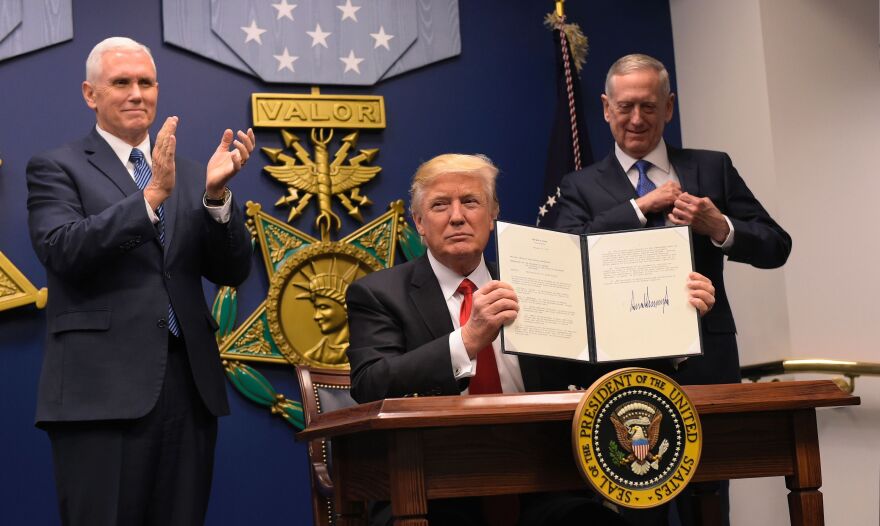It's been a busy week for President Trump's pen.
Since taking the oath of office on Jan. 20, Trump has signed more than a dozen executive orders and memorandums in an effort to jump-start his policy agenda and begin to deliver on some of the promises he made during the campaign.
But why is the president's directive to build a wall considered an "executive order," whereas greenlighting the Keystone XL and Dakota Access pipelines are "memorandums"? And how is all of that different from issuing an "executive action"?
The authority to issue executive orders and memorandums doesn't appear in the Constitution, and that's partly why the definitions are a little hazy, according to the Congressional Research Service. Nevertheless, the authority to issue both is considered an inherent aspect of presidential power.
An order is a call for the executive branch to take a specific action or to change an existing practice, explains Phillip J. Cooper, a professor of public administration in the Hatfield School of Government at Portland State University in Portland, Ore.
If the president has the authority to issue that directive, whether from the Constitution or statute, then it becomes legally binding. However, Cooper says, "if there's a clear piece of legislation that says, 'No you can't do this,' a president can't pick up a pen and get around it." In essence, a president can't sign an executive order that violates existing law.
Once a president signs an executive order, it's sent to the Federal Register for an identifying number, and then published.
That's a key step that isn't legally required with executive memorandums.
"There are no legal processes required for issuing a memorandum," Cooper says. "A president doesn't have to do anything, doesn't even have to publish it if he or she doesn't want to. With an executive order, presidents must publish." The Obama administration started publishing public memorandums on the White House website, and the Trump administration has followed suit. But, Cooper says, that is something they choose to do, and what's available on the website now may not include all of the new administration's memorandums.
Executive orders and memorandums are often conflated. "In the last few administrations, particularly since the Clinton years, presidents started using the two interchangeably," says Cooper.
In a January 2000 memo to then-President Bill Clinton, the Justice Department wrote, "It is our opinion that there is no substantive difference in the legal effectiveness of an executive order and a presidential directive that is not styled as an executive order."
While presidents have treated executive memorandums as just as binding as executive orders, Cooper says, "there really is not a clear body of case law or statutes on that."
As for "executive actions," Cooper says the phrase is very generic. He explains that executive actions are "merely a category" of different policy tools that presidents often use — including executive orders and memorandums — that has no separate legal meaning itself.
Regardless of the word appearing after "executive," if his first week in office is any indication, it seems President Trump's pen won't be getting a rest any time soon.
Copyright 2020 NPR. To see more, visit https://www.npr.org.


